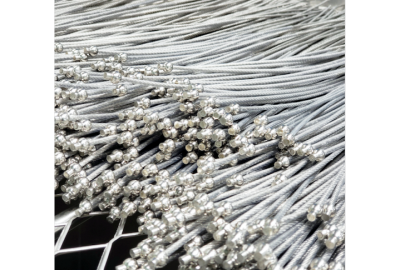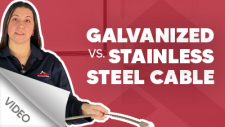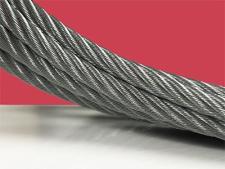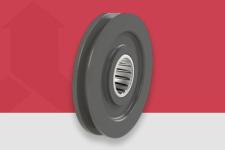Manufacturing stainless steel or other alloy wire, which is ultimately used to strand mechanical cables is accomplished through a wire drawing process. As the wire is drawn through a series of drawing dies, it’s diameter is reduced until it achieves the desired finished diameter. During the wire drawing process, the wire is naturally introduced to impurities. Drawing oil, particulate and other foreign matter inherently come into contact with the wire. Once the wire is stranded into mechanical cable, in many cases, these contaminants can be harmful to the final application they are meant to support. In these cases, the cables will need to be free of these impurities.
In the case of space and aircraft, as well as the proliferating medical devices, instruments and surgical robotics markets, mechanical cables impregnated with unwanted particles can cause serious damage to system components or worse, human beings.
Fortunately, there are cleaning methods that can reduce or eliminate these unwanted mechanical cable hitchhikers.
Ultrasonic Cleaning
An ultrasonic cleaning machine is one of the best wire rope cleaning devices for removing oil, dirt and particulate from the surface of your cables and wires. With ultrasonic cleaning, the process starts by submerging the wire in an ultrasonic bath.
While submerged, the ultrasonic machine uses high-frequency sound waves to vibrate particulate matter off the metal's surface. The parts are subsequently rinsed and dried. That process alone typically removes most surface impurities.
Although ultrasonic cleaning removes much of the build-up, it does not remove grime in its entirety. One can check it’s cleanliness by dragging a wire or cable through a white cloth prior to and subsequent cleaning. In both cases, the cable or wire will generally leave a grey stain on the cloth, but that impression should be much less noticeable after ultrasonic cleaning.
Vapor Degreaser
Vapor Degreasing is another successful method of cleaning wire rope. Vapor Degreasing involves suspending the material above a solvent bath. As the solvent heats, the vapor strips contaminants from the wire rope and is collected by a trough at the top of the machine and carried away.
Most customers use the two techniques in conjunction; they will first use ultrasonic cleaning to vibrate contaminants free, then they will use the vapor degreaser to lift any remaining contaminants off the surface. Sometimes the dual process is repeated multiple times to ensure maximum cleanliness, especially in precision industries like the medical field.
Passivation
Another process that improves the cleanliness of wire rope is passivation. This is achieved by pre-rinsing the wire in a heated bath then soaking it in nitric acid for 30 minutes before rinsing once again. All of this is done at an elevated temperature. It is intended to remove surface iron from the wire. During the initial manufacturing process cables may pick up unintended traces of iron as well that can lead to rust in the future. This treatment strips away particulate at the microscopic level, which also aids in overall cleaning.
Alcohol Wipe
Wire and Wire Rope may be cleaned using an isopropyl alcohol wipe. The process is as straightforward as it sounds where the product is wiped using alcohol to remove surface debris.
This can be done on a reel to reel basis, at the wire or rope level, or for finished assemblies.
The Difference Between Wire and Cable
Unlike cables, wires are not braided together and more of their surface area is exposed, thus making them easier to clean. Wiping down the cable with alcohol will only clean the surface. Ultrasonic cleaning and vapor degreasing are essential in order to clean particulate from the inside of the cable strand.
Because of the sanitation requirements necessary in medical wire, these cleaning processes may be repeated numerous times. For instance, we will do the ultrasonic cleaning and vapor degreasing in-house before sending them to medical customers who will then repeat the process or passivate the wire additional times.
Takeaways
-
It can be extremely difficult to clean all oil and particulate matter off of a wire or cable surface.
-
Ultrasonic cleaning, vapor degreasing, alcohol wipe and passivation are some of the three best methods for cleaning grime at a microscopic level
-
Cleaning processes may be repeated numerous times to ensure that precision parts are thoroughly cleaned.
To learn more about wire rope cleaning devices, or to view our entire product catalog, visit Carl Stahl Sava Industries today.






